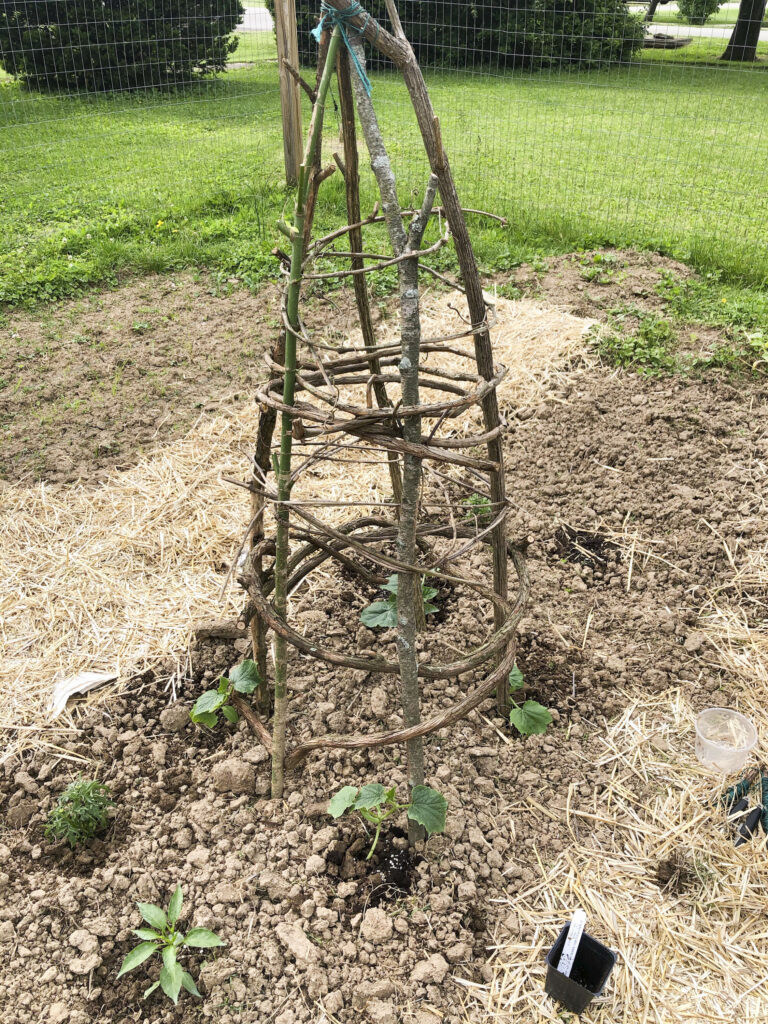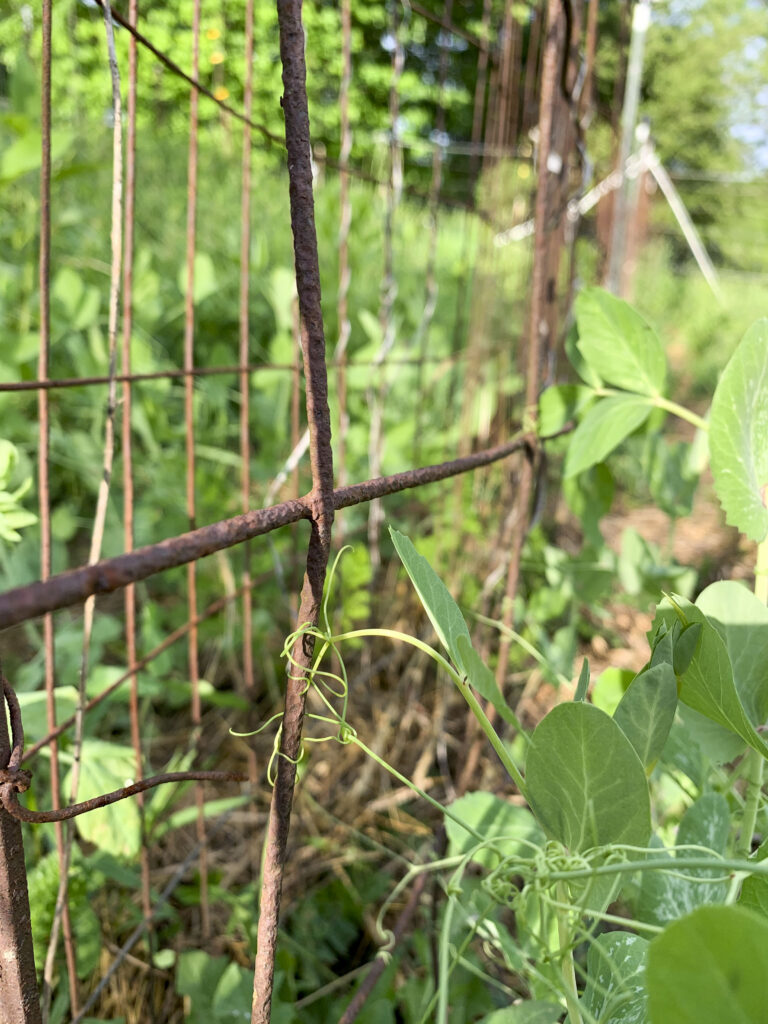By ALDONA BIRD
Newsroom@DominionPost.com
With the danger of frost passed, gardens are starting to really pop. With flowers and veggies flourishing in gardens large and small, you may notice trellises going up, too.
A trellis is ideal for supporting climbing plants but also useful for flowers and vegetables that are too heavy to hold themselves up, such as tomatoes. Stakes can work for non-climbers that need a little help, but a trellis can be convenient for larger plants, or several plants and gives the option of a permanent structure in your garden.
Building your own trellis can bring personal flair to your growing space.
To add a natural-looking trellis to your garden, try using branches. If you can get your hands on some pruned grape or wisteria vines, they are excellent trellis-building material.
For plants that don’t need very high support, you can lace grapevines in arches, sticking both ends into the ground. Overlap the arches to make the shape you want. You can start with short vines and build up to using longer vines for taller arches or use all of a single height.
For a taller trellis, use longer branches to create a frame and wind the vines in between. A little string is all you need to secure cross pieces in place.
If you don’t have vines on hand, but want to use other branches, pulling string tightly between branch frames every six to 12 inches works well, especially to support climbers like peas and cucumbers.
While a straight line trellis is most usual, don’t forget to think outside the row; trellises can be curved, circular, narrow and tall, short and wide or anywhere in between. Every garden doesn’t have to be designed in straight rows. A trellis does not have to be conventional if you prefer a different style.
You can make a simple trellis. This type of trellis can give your garden a classic and clean look.
A simple way to build a basic long-lasting trellis requires just T posts, wire fencing, wire and wire cutters. If you don’t have wire fencing, you can also just use a heavy gauge of wire.
Pound the T posts in every six to eight feet to make the length of trellis you want. If using fencing, attach it to the posts by twisting some small pieces of wire through the fencing and around the post.
If you are using just wire, you may want to place your posts closer together but no more than six feet apart. String the wire between the posts at the distance suitable for the crop you plan to plant.
Using the same materials, you can turn your trellis into an arch. Arches work well to support climbing plants such as beans, hops and light winter squash (you will have to train the vines, and if the fruits get too heavy, you can sling them with cloth, so they don’t rip the vine before they are ripe).
You can make an arch with cattle panel, which will support itself, or use lighter fencing supported by branches or T posts. If using branches, bury them or use posts hammered into the ground for support.
Other materials to consider for a DIY trellis are pallets. Propping one at an angle is a popular way to make a quick trellis, which is especially good for cucumbers.
If you have bamboo on hand, it also can make a great trellis frame.
For those who enjoy a little carpentry work, a trellis can be a great project, especially for practice or teaching others. Using wood, you can make a triangle or other shapes and pull string across or use wire or fencing to fill it in.
If you have the space, consider making several trellises with different shapes. However you chose to make your garden trellis, your plants will love it.
TWEET @DominionPostWV







